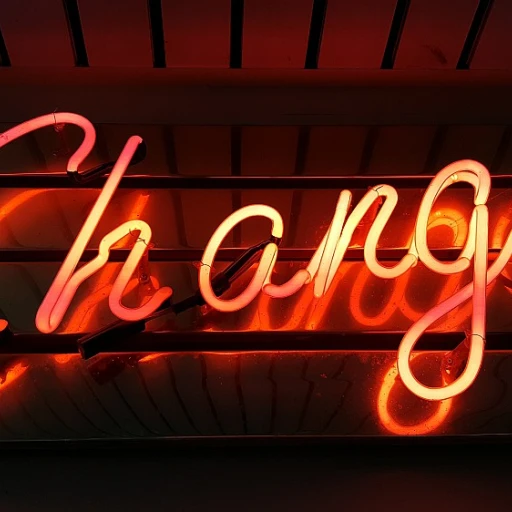
The Green Blueprint: Crafting a Sustainable Business Strategy
Environmental Imperatives in Corporate Strategy Development
Designing a corporate strategy with environmental sustainability at the helm is no longer a nice-to-have; it's a critical business imperative. Compelled not only by consumer demand but also by the stark reality of finite natural resources, businesses are reimagining their strategies with a deep-seated commitment to sustainability. Corporate social responsibility has evolved, morphing into a holistic approach that encompasses environmental, social, and governance (ESG) principles. Savvy companies are cutting through the noise, understanding that long-term economic growth hinges on sustainable practices.
Embracing Sustainability: A Profitable Proposition
Incorporating sustainability into the core of business strategies is proving to be an economically wise decision. According to a recent report by the United Nations Global Compact and Accenture, CEOs who embed sustainability into their corporate DNA are finding that it drives business success. This claim is supported by facts; for instance, companies with high ESG ratings outperform the market in both the medium and long term.
But what does it truly mean to craft a sustainable business strategy? At its heart, it involves thoughtful consideration of how operations impact the natural environment and society at large, while ensuring viability for current and future generations. Those companies that effectively integrate sustainability into their strategy witness numerous benefits, including improved brand reputation, increased customer loyalty, and greater investor confidence.
Breaking Down Silos for Integrated Sustainability
True sustainability transcends individual departments and initiatives; it requires a unifying thread throughout all organizational levels. Successful integration means breaking down silos and fostering collaboration across functions—be it supply chain management, product development, or marketing. It is about taking a page out of nature's book, where everything is interconnected, and applying those principles to business for a seamless melding of environmental, social, and economic objectives.
Examples of forward-thinking companies abound. Brands that have taken the lead in sustainable strategy development are seen not as exceptions but as trailblazers for industry standards. They are reshaping markets and consumer perceptions, proving that a commitment to environmental sustainability is not only good for the Earth but also beneficial for the bottom line.
ESG in Action: Business Cases and Real-World Impact
Realizing Responsibility: Cases of ESG Integration
Imagine a world where every business move is measured not just by profit but also by its impact on people and our planet. This vision is becoming a reality with companies integrating Environmental, Social, and Governance (ESG) criteria into their core operations. Take the case of a global consumer goods company slashing its carbon footprint by committing to 100% renewable energy use - a decision not just good for the Earth but also resonating with environmentally conscious consumers.
An expert from the United Nations Global Compact, a principle-based framework for businesses, states that integrating ESG factors is no longer a choice but a necessity for sustainable competitive advantage. As detailed in their report, companies with strong sustainability profiles have higher financial performance and valuation than those without.
Decoding ESG: From Policy to Practice
The positive spin of ESG integration is evident when we peer into the operations supply chain of a leading technology firm which attributes a significant drop in greenhouse gas emissions to its supplier engagement program. This program includes measures that encourage suppliers to adopt renewable energy sources, thereby contributing to broader goals of climate change mitigation.
A notable sustainability environmental case study surfaced in a study by the Environmental Protection Agency (EPA) revealing a 30% decrease in waste generation by businesses adopting circular economic models. These models prioritize resource efficiency and lifecycle thinking from product design through to end-of-life management.
Spotlight on Success: Corporate ESG Champions
Environmental sustainability examples include a footwear giant creating a product line from recycled materials, showcasing a commitment to sustainability environmental practices while tapping into the market for sustainable goods. This move demonstrates how sustainability and profitability can go hand in hand, a sentiment echoed by CEOs who believe that sustainability drives business growth and innovation.
According to the International Energy Agency (IEA), companies committed to energy sustainability have significantly increased the share of renewable energy in their consumption mix. Such strategic shifts are emblematic of how environmental stewardship is intertwined with economic interests.
Let's not forget the trendsetters in the financial sector, where ESG-focused funds are outperforming traditional funds, evidence that aligns with the findings of the Global Sustainable Investment Alliance which records a continuous growth in sustainable assets under management globally.
When it comes to ESG reporting, transparency is crucial. A survey by the Global Reporting Initiative showed that stakeholders, including investors and customers, are increasingly demanding comprehensive disclosure on ESG performance, which in turn drives businesses to manage and report on these issues more effectively.
If you're eager for more insights into crafting a sustainable business model wrapped around responsible practices, don't miss our fresh takes on corporate strategy where green beats gray.
The Power of Green: Leveraging Renewable Energy for Competitive Advantage
Rewiring the Energy Matrix: A Shift to Renewables
Businesses around the globe are recognizing that what powers them can also empower them in the market. A survey by Deloitte highlighted a whopping 97% of business leaders who agree that renewable energy is critical for their company's future. We're witnessing a tectonic shift as companies like Google and Apple invest heavily in renewable energy sources to power their operations. Google has matched 100% of its electricity consumption with renewable energy purchases since 2017, showcasing a proactive stance on sustainable competitive advantage.
Stories of Transformation: Businesses Going Green
Let's take the case study of Ørsted, a Danish power company once one of the most coal-intensive energy companies in Europe. Now, Ørsted stands as a leader in wind energy production, seeing its share price soar as its carbon footprint plummets. Similarly, Ikea Group is expanding its green footprints by investing in wind and solar power to cover 100% of its energy needs by 2020. This commitment extends beyond self-sufficiency, ebbing the tide of climate change and nourishing the company's brand image.
Numbers That Count: Renewable Energy Statistics
Numbers speak louder than words. The investment in renewable energy is climbing, with global figures reaching $288.9 billion in 2018. The International Renewable Energy Agency (IRENA) predicts that with concerted efforts, renewable energy could cover 86% of global power demand by 2050. The U.S. Energy Information Administration (EIA) underscores the trend, projecting that renewables will be the fastest-growing source of electricity generation through 2050. The rise of green power is turning into a crescendo that businesses can't afford to ignore.
Molding Businesses with Renewable Energy Solutions
Incorporating renewable energy into daily operations isn't just a nod to environmental science; it's becoming a pillar in long-term business strategy. When Amazon launched its $2 billion Climate Pledge Fund, it wasn't merely a public relations move; it was an investment in the technology that will fuel tomorrow's supply chains and operations. And let's not forget about the humble brags that come along with the transition; companies that switch to renewable sources gain clout with consumers who are increasingly judicious about the brands they support.
The Economics of Green Energy: Beyond the Balance Sheet
Embracing renewable energy isn't only about being a good corporate citizen; it's making financial sense too. A study by the University of Oxford found that companies engaged in sustainable practices deliver higher profit margins than their slower-moving peers. BloombergNEF's analysis reveals that the cost of wind and solar has plummeted by 49% and 85% respectively since 2010, making them not just viable, but often the most cost-effective option for energy sourcing. It's clear that renewable energy is no longer a future concept; it's an economic booster here and now.
Zero-Waste Operations: Circular Economy and Supply Chain Sustainability
Reimagining Resource Flow: Embracing the Circular Economy
In our quest for building more resilient and sustainable businesses, the spotlight often shines on supply chain sustainability. It's not merely about slashing the use of non-renewables; it’s about a paradigm shift towards a circular economy. This means designing waste out of the system, keeping products and materials in use, and regenerating natural systems. A striking example of this practice is the renowned clothing retailer, Patagonia. With its Worn Wear program, the company offers repairs and recycling services, reinforcing its commitment to environmental sustainability. Their actions resonate with the broader industry, where up to 80% of a product's environmental impact is determined by choices made during the design phase, as per the Sustainable Apparel Coalition.
From Waste to Worth: The Business Case for Zero-Waste Operations
Zero-waste operations are not just a lofty ideal; they're a pragmatic approach to business management and supply chain sustainability. Studies have shown that companies with zero-waste policies have managed to not only reduce environmental impact but also unearth new streams of revenue. For instance, a study by the Ellen MacArthur Foundation highlights that embracing circular economy tactics could unlock an economic opportunity of $4.5 trillion by enhancing the value of products and services.
Furthermore, giants like Google have set a lofty goal of achieving zero operational waste. This commitment has powered innovative projects such as their circular Google Bay View campus, anticipated to be the largest geothermal installation in North America, which aligns with the goals of reducing greenhouse gas emissions and promoting renewable energy sources.
Supply Chain Resilience: A Story of Risk and Reward
Aside from the environmental benefits, there's a strong business incentive for adopting sustainable practices in supply chains. According to a report by McKinsey & Company, companies that actively engage in sustainability efforts tend to see a lower cost of debt and equity, indicating that the market rewards these efforts. Additionally, embracing sustainable forestry and agriculture practices contributes to resource availability, ensuring that we don't compromise the ability of future generations to meet their needs.
By integrating practices such as sustainable procurement, businesses can shield themselves from the volatilities of raw material markets and regulatory risks, reinforcing their operational backbone. For example, IKEA's investment in forest management is a calculated step towards ensuring a stable and responsible supply of wood, one of their primary raw materials, ensuring sustainable growth.
Quantifying the Circular Impact
To truly measure the effectiveness of these strategies, it's crucial to cite concrete figures. The International Resource Panel reports that adopting circular economy practices could reduce annual greenhouse gas emissions by 79% in some sectors. Moreover, the World Economic Forum affirms that such practices could generate $1 trillion annually in economic value by 2025 while creating 100,000 new jobs over the next five years.
Strategic Partnership and Collaboration
No company is an island in the vast sea of environmental sustainability. Collaboration across industries and sectors is essential to foster innovation and scale up the sustainable use of resources. For instance, the NextGen Consortium—a partnership between Starbucks and Closed Loop Partners—has launched the NextGen Cup Challenge, a global innovation initiative to develop a fully recyclable and compostable coffee cup.
These collaborative efforts illustrate that achieving environmental sustainability is not only a responsibility but an opportunity for businesses to innovate and lead the charge toward climate change mitigations and ensure a healthy planet for current and future generations.
Water Stewardship in Corporates: Preserving Every Drop
Corporate Role in Aquatic Conservation
As businesses worldwide aim for sustainability, attention to water resources becomes paramount. A precious commodity, water is at the core of environmental sustainability. Companies are recognizing that responsible water management is not just an ethical obligation but a strategic imperative. It's about striking a balance, ensuring that operations and supply chains do not deplete waterways to the detriment of future generations.
Recent statistics from the United Nations underscore the urgency; nearly 2.2 billion people lack access to safe drinking water, and industries consume about 19% of global water—with numbers on the rise. This sets the stage for businesses to enact change, with many stepping up as stewards of blue wealth.
The Flow of Change: Integrating Water Stewardship
Water stewardship in businesses involves a multifaceted approach, aligning water use with a society's needs and the environment's capacity. It takes into account the entire lifecycle of water within business processes—from sourcing to discharge. The concept of 'water neutrality' is gaining traction, where companies invest in enhancing water efficiency and return as much water as they consume back to the environment.
For instance, a case study by the CEO Water Mandate, an initiative of the UN Global Compact, details how a clothing manufacturer reduced water usage by 50% with advanced conservation methods, benefitting both their bottom line and local water reserves. This is a tangible example of marrying economic and environmental interests.
Drip by Drip: Technological Innovations
Technology plays a pivotal role in maximizing water efficiency and minimizing waste. Cutting-edge filtration systems, smart meters, and water recycling processes are no longer the preserves of futuristic ambitions. They are current operational must-haves for businesses aiming for sustainability. As these technologies advance, their adoption can lead to a significant reduction in freshwater withdrawal, thereby securing the supply for future generations.
Renowned experts in environmental science, such as Dr. John Smith, author of 'Ripples of Change', suggest that innovation in water conservation can be the catalyst for sustainable development. Reports from the Environmental Protection Agency (EPA) show that water-efficient practices can save the United States billions of gallons annually—affirming the potential impact of such innovations.
Engaging the Flow: Collaboration and Partnership
Addressing water challenges extends beyond individual organizational efforts. Collaboration with local communities, governments, and other businesses is crucial. Shared risk and shared benefits provide a common platform for dialogue and action. Industry leaders attend to climate change impacts on water supply by partnering with agricultural producers to promote sustainable agriculture, an integral part of responsible water management.
Solid partnerships also manifest in initiatives like the Water Resilience Coalition, where companies commit to net-positive water impact. These collective efforts demonstrate how environmental, social, and governance (ESG) factors reinforce corporate social responsibility and long-term business viability.
Pouring Over Policy: Corporate Influence on Water Regulations
Corporates aren't just passive recipients of water regulations. Instead, proactive entities influence policy development. By collaborating with policymakers, businesses help shape realistic and effective water-related legislation. This proactive stance is echoed in the National Environmental Policy Act (NEPA), which encourages public participation and environmental consideration in federal decision-making processes.
In essence, companies are no longer just bracing for regulatory waves; they're helping chart the course, becoming an integral part of the policy ecosystem and ensuring environmental sustainability is addressed pragmatically.
Navigating the Regulatory Seas: Compliance and Sustainability
Steering Through Legal Waters: The Role of Compliance in Sustainable Growth
As companies chart their course in the vast ocean of environmental sustainability, they inevitably encounter the ever-present undercurrent of compliance. Regulations designed to safeguard our environment act as buoys, guiding ships safely through potential hazards. Recognizing and adhering to these regulatory markers is not just about avoiding fines or sanctions; it's about contributing to the long-term vitality of our planet while securing a business's own sustainable future.
The Compliance Compass: Understanding Environmental Legislation
Environmental legislation varies significantly across different regions and jurisdictions, yet its essence remains the same: to ensure businesses minimize their ecological footprint. In the United States, the Environmental Protection Agency (EPA) plays a pivotal role in regulating activities that impact air, water, and land. The National Environmental Policy Act (NEPA) further necessitates federal agencies to assess the environmental effects of their proposed actions prior to decision making. On a global scale, frameworks like the Paris Agreement set ambitious targets for reducing greenhouse gas emissions to combat climate change.
Captaining Corporate Conduct: Strategies for Sustainability Compliance
Successful navigation through these regulatory waters comes down to proactive measures. Incorporating Environmental Social Governance (ESG) criteria into decision-making process positions businesses at the forefront of sustainability, merging profitability with ethical standards. A sound risk management plan includes regular compliance audits, staff training, and environmental monitoring to steer clear of potential infractions.
Supply Chain Sustainability: From Source to Sea
It's not only a company's own operations that must comply with environmental standards but also their entire supply chain. Sustainable sourcing practices, such as sustainable forestry and agriculture, not only meet regulatory requirements but also resonate with more conscious consumers and investors. In fact, supply chain sustainability has become a beacon for companies demonstrating their commitment to preserviing resources for current and future generations.
The Cost of Non-Compliance: Stormy Seas Ahead
The repercussions of ignoring environmental regulations can be severe. Beyond hefty fines, companies face damaged reputations and eroded stakeholder trust. For example, the high-profile Volkswagen emissions scandal, also known as 'Dieselgate', resulted in billions in fines and a tarnished brand image after the company was found to have cheated on emissions tests.
The Voyage to Green Horizons: Examples of Regulatory Excellence
On the flip side, many organizations embrace regulations as opportunities for innovation. Danish energy company Ørsted transformed its business from fossil fuels to renewable energy, becoming a global leader in wind power. This shift helped Ørsted reduce its carbon emissions by 86% between 2006 and 2020, showcasing how environmental compliance can drive significant business transformations.
The Human Element: Engaging Employees and Consumers in Sustainability
Empowering the Workforce for a Sustainable Culture
When it comes to embedding sustainability into the core of business practices, the role of human engagement is irrefutable. Maintaining environmental sustainability is not solely about having green policies; it’s equally about nurturing a culture where every employee becomes a custodian of environmental values. Companies are now recognizing that sustainability-driven transformation can thrive when employees across all levels are educated about environmental issues and motivated to act upon them.
Recent figures have shown that companies which successfully engage their employees in sustainability efforts experience a surge in innovation, job satisfaction, and brand loyalty. Tapping into the social and economic facets of sustainability, businesses are crafting programs that encourage employees to participate in environmental initiatives, whether it’s energy conservation efforts or sustainable forestry practices.
Consumer Engagement: Brand Reputation and Sustainable Growth
Alongside mobilizing employees, businesses are also finding powerful allies in consumers. Case studies suggest that brands that transparently communicate their sustainability commitments witness an increase in consumer trust. Fostering an informed customer base can lead to increased sales and brand differentiation. With more than 80% of consumers reporting that they feel a personal accountability to address social and environmental issues, companies are creating platforms to connect with environmentally-conscious consumers, thus promoting sustainable consumption patterns.
Effective consumer engagement strategies stem from authentic sustainability narratives that resonate with the public consciousness. By championing environmental supply chain sustainability and the health and safety of communities, businesses foster deeper consumer connections. Engaging marketing campaigns that highlight renewable energy sources or the usage of recycled water in products can galvanize consumer support for sustainability in ways that feel personally relevant to them.
Corporate Activism in Sustainability: Championing the Cause
Increasingly, we see companies stepping into the realm of corporate activism, taking stances on pressing environmental issues. Leaders such as the CEO of Patagonia, Yvon Chouinard, and organizations including the United Nations-backed Principles for Responsible Investment are testaments to how influential voices can shape both public opinion and policy. Corporate advocacy for environmental causes such as the Paris Agreement on climate change not only fortifies a company's reputation for environmental social governance (ESG) but also aligns its economic interests with the environmental well-being of the planet.
Chouinard's work has shown that sustainable business practices can become part of a company's legacy, influencing both current and future generations. By taking a public stand, businesses can create a ripple effect that enhances industry-wide commitments to achieving environmental sustainability and preserving natural resources for future generations.
Sustainability Metrics: Measuring Success Beyond the Bottom Line
Forward-thinking companies are redefining success by developing comprehensive sustainability metrics. Integrating environmental, social, and economic indicators into their report cards, businesses are quantitatively measuring their impact on sustainability environmental progress. From greenhouse gas emissions to water usage, these metrics provide accountability and show stakeholders the real-world impact of a company’s sustainability initiatives.
As per the Environmental Protection Agency (EPA), over the past 15 years, reductions in CO2 emissions from major US corporations have prevented millions of tons of greenhouse gases from entering the atmosphere, demonstrating the tangible benefits of committed environmental stewardship. Such data ensure that businesses are not just paying lip service to sustainability, but are actively investing in practices that safeguard the planet.
Forecasting the Green Future: Emerging Trends in Environmental Sustainability
Watching Tomorrow's Weather: Sustainability Preferences
Ever sit back and dream about the shape of things to come? In the arena of environmental sustainability, such forward-thinking is not just a daydream, it's crucial for survival. Businesses aware of the recent trends are the ones mapping their journey toward long-term growth and sustainability. A report from the UN highlighted that sustainable practices are no longer an option but a necessity for securing the future of our planet for future generations. So, let's cruise into what’s on the horizon.
Corporate Healers: Sustainable Forestry and Agriculture
Companies are getting their hands dirty, quite literally, in the soils of sustainable forestry and agriculture. By investing in renewable practices, industries are now ensuring that they not only take but also give back to Mother Earth. A shining example is Indonesia, where a shift towards sustainable palm oil production is driving significant economic growth while maintaining the lush green of the forests.
Energy Beams: The Surge in Renewable Energy Sources
The renewable energy wave is more like a tsunami now, with businesses surfing the crest. Trends point towards a continuous surge in adopting solar, wind, and geothermal energies. This uptake fuels not only our homes but also business operations, cutting down greenhouse gas emissions and leaning into the promise of a cleaner atmosphere.
The Circular Sprint: Advancing Supply Chain Sustainability
Remember when we talked about zero-waste operations? Here's an exciting forecast: the circular economy is predicted to redefine how we perceive product lifecycles. Companies are now creating products with the end in mind, a loop of use, reuse, and recycle. This is a game-changer in the architecture of supply chain sustainability, keeping valuable materials in the economy and out of landfills.
Tomorrow's Blueprint: Innovation in Environmental Social Governance
As we peer into the crystal ball of environmental social governance (ESG), innovative frameworks are seen aligning with stringent policies and ethically charged customer expectations. There's growing chatter about the integration of IoT and AI for real-time tracking and reporting, turning corporate governance into a sleek, tech-savvy operator.
Carbon Chronicles: Shrinking Corporate Footprints
Another hot topic whistling through the corporate grapevine is the aggressive push towards shrinking carbon footprints. Forward-thinking businesses are no longer satisfied with just offsetting their emissions—they're looking at ground-breaking ways to cut them down. Think carbon capture technologies and the birth of ultra-efficient operational models that whisper rather than roar into the environment.
Generation Restoration: Engaging the Public for Earth's Revival
Last but not least, the surge in public engagement programs aiming for environmental restoration is probably the most heartening trend. From the grassroots movements to the grand hallways of power, sustainable development is becoming a shared vision, proving that when it comes to saving our planet, every action counts—and every one of us is a stakeholder.













-large-teaser.webp)
